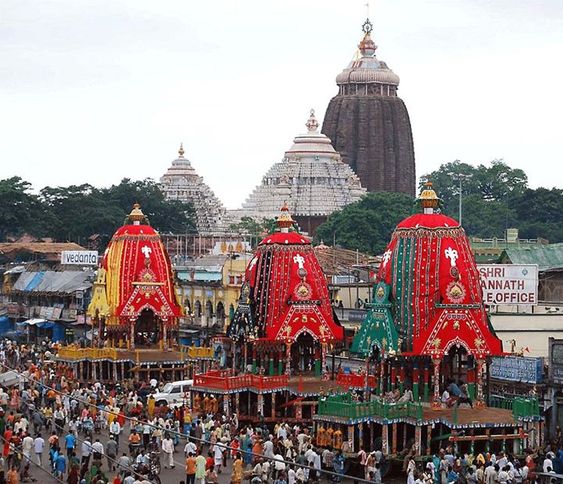Rath Yatra is a Hindu festival celebrated each year in the Hindu month Asadha. This festival is dedicated to Lord Jagannath and his siblings, Subhadra and Balabhadra. The celebration takes place in eastern India, especially in Jagannath Temple of Puri, Odisha. Puri is known for its grand Rath Yatra celebration.
According to Puranas, Lord Jagannath wished to visit his maternal aunt’s place with his siblings. Since each year Rath Yatra is being celebrated to commemorate his journey from his home Jagannath temple to Gundicha Temple via Mausi Maa temple. They travel through three giant Raths (chariots). Those are pulled by twelve horses along with thousands of devotees. After a week, the deities get back to their own place.
Jagannath’s Chariot is called ‘Nandighosa’, Subhadra’s chariot is ‘Dwarpadalana’, and Balabhadra’s chariot is ‘Taladhwaja’. These chariots are every year constructed newly.
The name of Jagannath means the lord of the world, who is another form of Lord Krishna and Lord Vishnu. Jagannath, Subhadra, and Balabhadra are the lords with a visually large head, no legs, or hands and made of wood and cloths.
Why?
According to Hindu mythology, when the idols were built, the artisan told the patron king to do not open the door until the idols are completed. But the excitable king unlocked the door, and thus, the idols left incomplete.
On the day of Rath Yatra, thirty-two different types of prasad (Mahaprasad) are made especially for lords and later distributed to the devotees. People consider the prasad as Lord Jagannath’s blessing.
Eventually, in West Bengal, kids pull their wooden little chariots, decorated with colorful papers, flowers, and Jagannath, Subhadra, Balabhadra idols in it.
Feature Image Credit: Pinterest.
